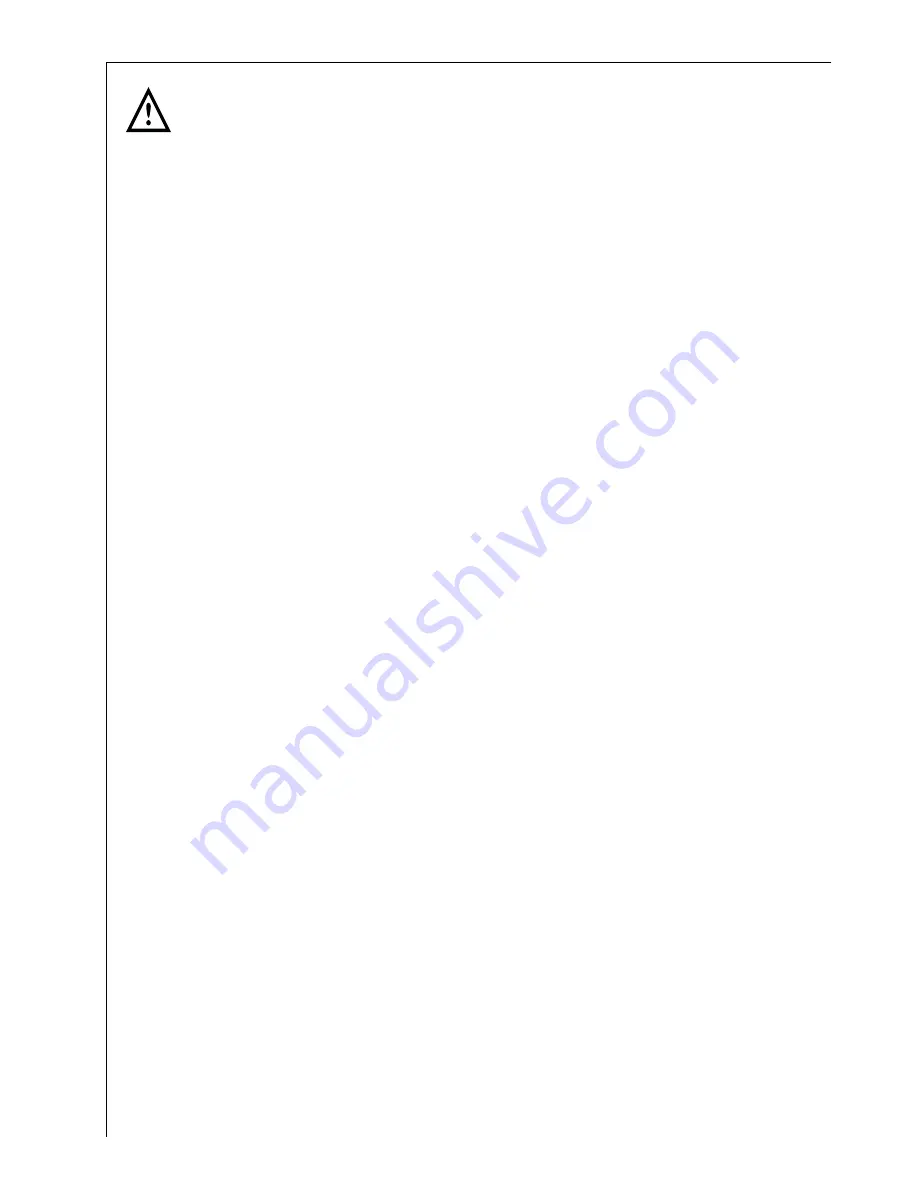
4
Safety
The safety aspects of our refrigerators/freezers comply with accepted tech-
nical standards and the German Appliance Safety Law. Nevertheless, we
consider it our obligation to make you aware of the following safety infor-
mation:
Intended use
• The refrigerator is intended for use in the home. It is suitable for the coo-
ling, freezing and storing of frozen food, as well as for making ice. If the
appliance is used for purposes other than those intended or used incor-
rectly, no liability can be accepted by the manufacturer for any damage
that may be caused.
• Alterations or changes to the freezer are not permitted for reasons of
safety.
• If you use the refrigerator in a commercial application for purposes other
than the cooling, freezing or frozen storage of foods, please observe all
valid legal regulations for your application.
Prior to initial start–up
• Check the refrigerator for transport damage. Under no circumstance
should a damaged appliance be plugged in! In the event of damage, please
contact your retailer.
Refrigerant
The refrigerant isobutane (R600a) is contained within the refrigerant circuit
of the appliance, a natural gas with a high level of environmental compa-
tibility, which is nevertheless flammable.
• During transportation and installation of the appliance, be certain that
none of the components of the refrigerant circuit become damaged.
• If the refrigerant circuit should become damaged:
– avoid open flames and sources of ignition;
– thoroughly ventilate the room in which the appliance is situated.
Safety of children
• Packaging (e.g. wraps, polystyrene) can be dangerous for children. There is
a risk of suffocation! Keep packaging material away from children!
• Please make old appliances unusable prior to disposal. Pull out the mains
plug, cut off the mains cable, break or remove spring or boltcatches, if fit-
ted. By doing this you ensure that children cannot lock themselves in the
fridge when playing (there is risk of suffocation!) or get themselves into
other dangerous situations.
• Often children cannot recognise the hazards present in household
appliances. It is therefore important that you ensure adequate supervision
and never let children play with the appliance!
Daily Operation
• Containers with flammable gases or liquids can leak at low temperatures.
25
F
D
PR18
F
F
F
E
E
H
G
Reversing the door
The side at which the door hangs can be changed from the right side (fac-
tory supplied) to the left side, if the installation site requires.
Warning!
When changing the side at which the door opens, the appliance
must not be connected to the mains. Remove plug from the mains befo-
rehand.
Procced as follow:
1.
Remove the clip-in ventilation grille
(D).
2.
Remove the bottom hinge (E) by
unscrewing the fixing screws.
3.
Slide the bottom door off the centre
hinge (H).
4.
Remove the centre hinge and slide
the top door off pin (G); unscrew pin
(G) and refit it on the opposite side.
5.
Remove the two plugs, to reveal the
holes for the hinge pivots, and
remount them on the other side.
6.
Refit the top door and the centre
hinge (H) on the opposite side.
7.
Refit the bottom door.
8.
Using a 10 mm spanner, unscrew
the hinge pin (E) and reassemble it
on the opposite side of the hinge;
9.
Refit bottom hinge (E) on the oppo-
site side, using the screws previously
removed.
10.
Remove blanking cover (F) from ven-
tilation grille (D) by pushing it in the
direction of the arrow and refit it on
the opposite side.
11.
Refit ventilation grille (D), clipping it
into place.





































